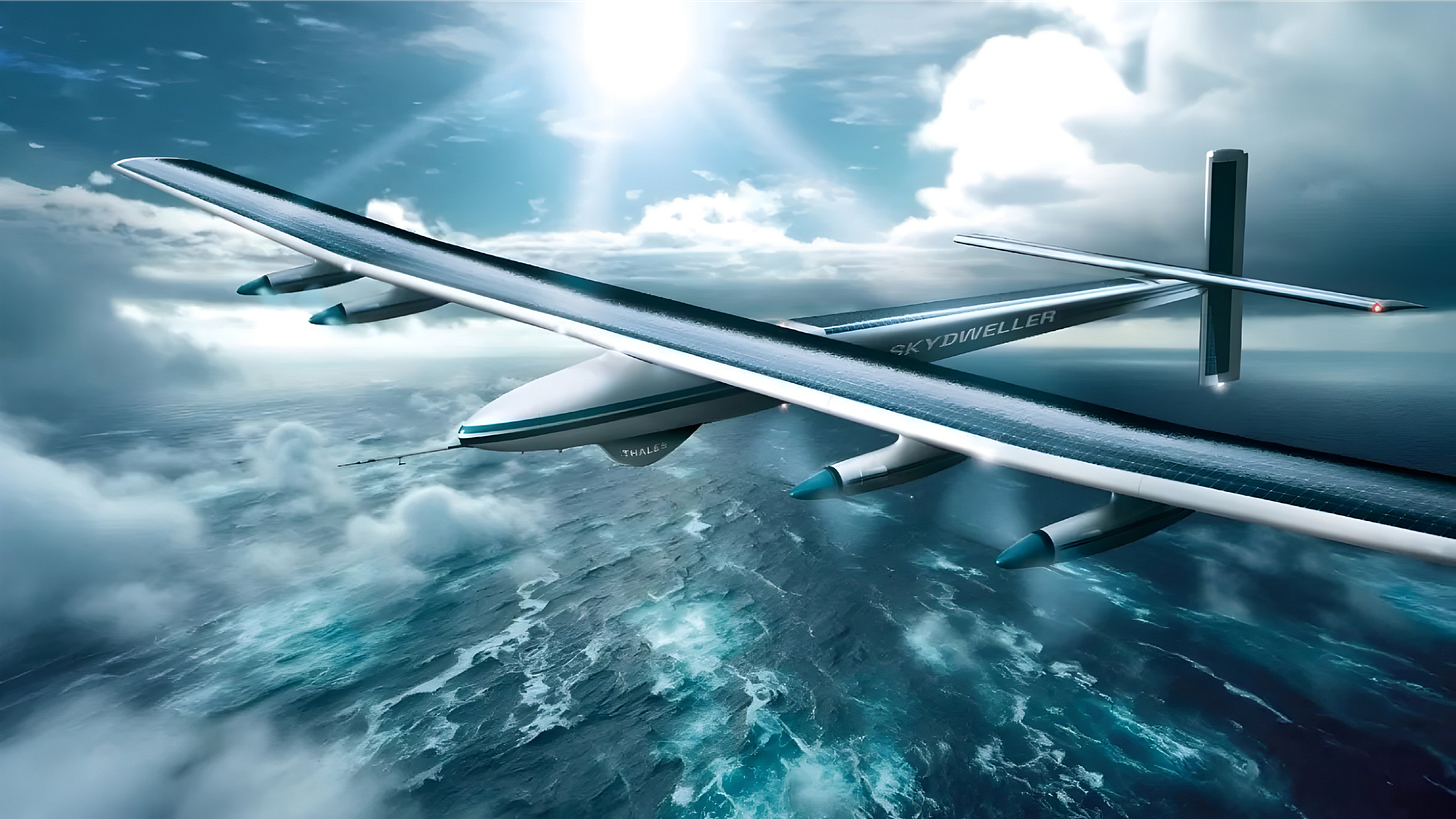𝕊𝕠𝕝𝕒𝕣 𝕊𝕜𝕪𝕕𝕨𝕖𝕝𝕝𝕖𝕣: 𝕋𝕙𝕖 𝕊𝕦𝕟-ℙ𝕠𝕨𝕖𝕣𝕖𝕕 𝔻𝕣𝕠𝕟𝕖 ℙ𝕠𝕚𝕤𝕖𝕕 𝕥𝕠 ℂ𝕙𝕒𝕟𝕘𝕖 ℍ𝕠𝕨 𝕎𝕖 𝕎𝕒𝕥𝕔𝕙 𝕥𝕙𝕖 𝕎𝕠𝕣𝕝𝕕
Introduction
A groundbreaking solar-powered surveillance drone named Skydweller has been developed with a wingspan exceeding that of a Boeing 747 jumbo jet—specifically, measuring 236ft (72m), about 25ft longer than a 747. Despite its immense size, Skydweller is extremely lightweight for its scale, weighing just 2.5 metric tons (about 2,500kg), roughly equivalent to a large pickup truck and 160 times lighter than a jumbo jet of similar dimensions.
Key Features and Capabilities
Endurance: Skydweller is designed to remain airborne for weeks or even up to three months at a time, powered entirely by solar energy and onboard batteries. The aspiration is to eventually achieve “perpetual flight” under ideal conditions.
Solar Technology: It is equipped with 17,000 solar cells covering approximately 2,900sq ft (270m²) of its wings. These can collectively generate up to 100kW during ideal daylight conditions. Excess power charges over 1,400lbs (635kg) of onboard batteries, which keep the drone aloft through the night.
Altitude: Typical operating altitudes are between 24,600ft and 34,400ft (7,500–10,500m). At night, the drone descends to lower altitudes (up to 9,800ft, or 3,000m lower) to conserve battery power, before ascending again once solar charging resumes by day.
Payload: The drone can carry up to 800–881lbs (ca. 360–400kg), suitable for sophisticated surveillance sensors, radar systems, and communications equipment. Thales has contributed advanced radar technology to enhance maritime and military surveillance capabilities.
Flight Control: With quadruple-redundant flight management and advanced autonomous systems, the aircraft can adjust to software faults, turbulence, and changing weather to maximize flight safety and endurance.
Origins: The Skydweller is based on the Solar Impulse 2 aircraft, which was the first solar plane to circumnavigate the globe in 2016. Skydweller Aero has acquired and extensively modified the platform for persistent, uncrewed operations.
Purpose: While its core mission is maritime and border surveillance—tracking ships, drug traffickers, pirates, and military fleets—the drone is also being considered for telecommunications, weather monitoring, and wildlife surveys.
Notable Achievements
In 2024, Skydweller performed its first fully autonomous solar-powered flight without a pilot.
Test flights have exceeded 22 hours for a single sortie, with ultimate designs aiming for non-stop missions lasting between 30 and 90 days.
Conclusion
Skydweller represents a significant leap for renewable aviation and autonomous surveillance, offering the potential for persistent, zero-emission oversight of vast oceanic and remote territories far beyond the reach of typical drones or even satellites


